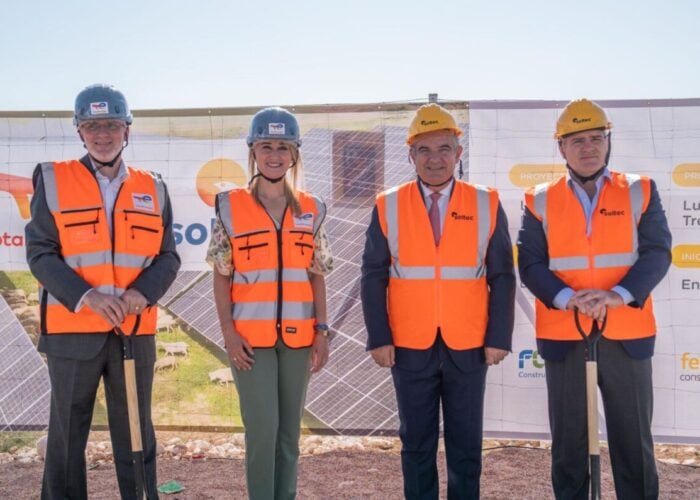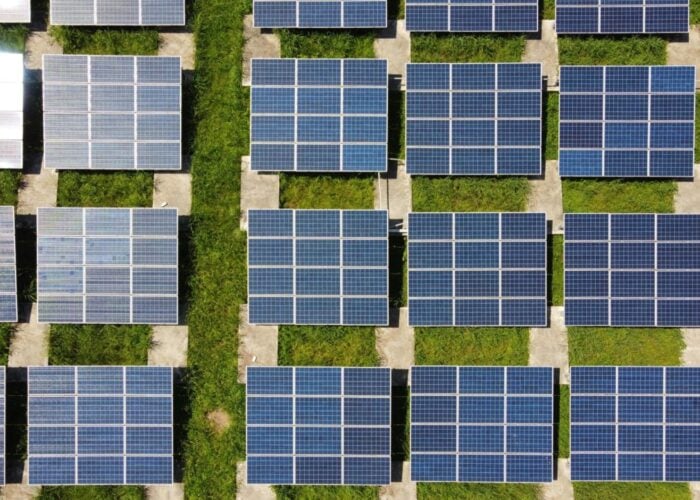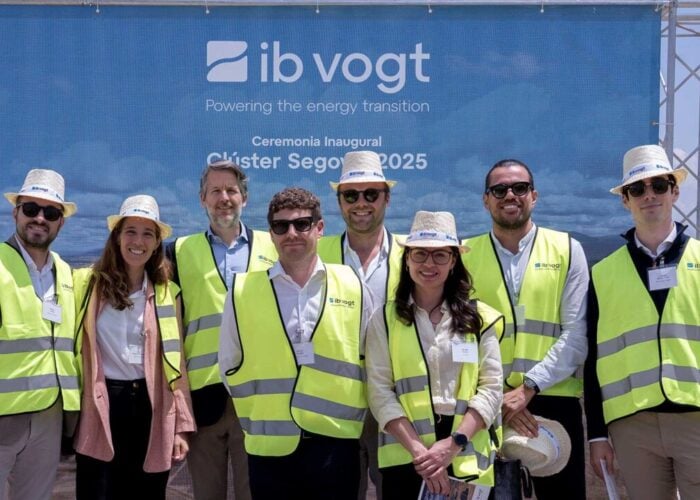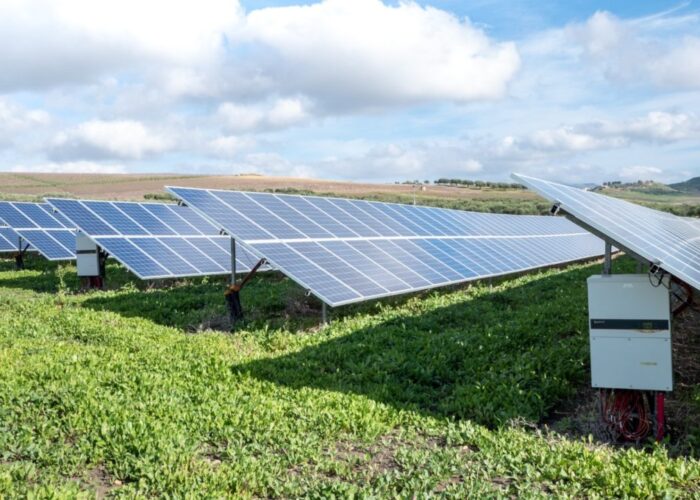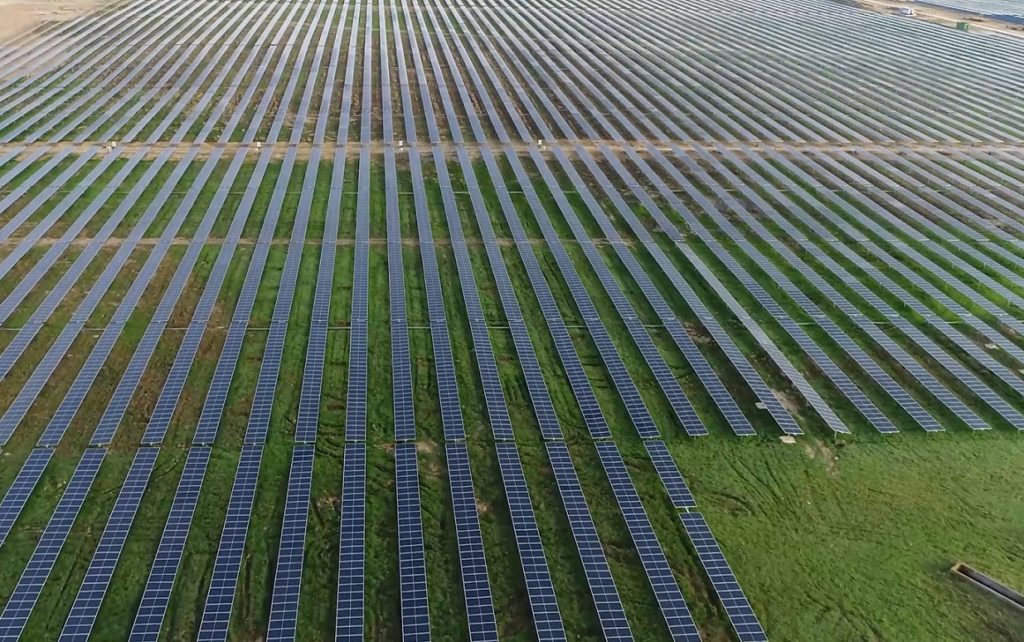
Featuring nearly 1.5 million PV modules and with a generation capacity of 590MWp, the Francisco Pizarro plant in Spain came into operation in August 2022. George Heynes talks to developer Iberdrola about the challenges of constructing Europe’s largest solar farm.
Perhaps one of the most promising regions for the development of solar PV is the Iberian Peninsula. Famed for its stunning scenery and scorching weather, Spain is one of the most prominent countries currently ramping up renewable energy generation in the form of solar.
Unlock unlimited access for 12 whole months of distinctive global analysis
Photovoltaics International is now included.
- Regular insight and analysis of the industry’s biggest developments
- In-depth interviews with the industry’s leading figures
- Unlimited digital access to the PV Tech Power journal catalogue
- Unlimited digital access to the Photovoltaics International journal catalogue
- Access to more than 1,000 technical papers
- Discounts on Solar Media’s portfolio of events, in-person and virtual
Spanish multinational electric utility Iberdrola has created something not only unique to Spain, but also to the wider European continent: Europe’s largest solar PV plant.
Situated in the central-western region of Extremadura, the ‘Francisco Pizarro’ project, named after the renowned Spanish conquistador, has a generation capacity of 590MWp and came into operation in August 2022. The plant has nearly 1.5 million PV modules installed.
The project was developed via an investment of £261 million (€300 million) and created various green jobs for the local area as well as an opportunity to scale the renewable energy generation industry. It also provided a basis to decarbonise various businesses and their operations.
During the construction phase of the project, it was reported that Francisco Pizarro created more than 1,500 jobs during peak construction periods. As indicated, this provided a solid foundation for the creation of green jobs in the local area and additionally prepped the population for an influx of renewable projects across Spain.
The Francisco Pizarro project also overtook the installed capacity of Iberdrola’s former largest solar plant in Spain, the 500MW Núñez de Balboa, for which the company was ordered by a Spanish court last year to return part of the land for the solar plant after disputes with one of the three landowners.
The development process
With the sheer size of the Francisco Pizarro site and previous difficulties in developing a solar farm of such scale, it was predicted the project would prove to be a challenge to develop. Perhaps the most difficult obstacle, according to Iberdrola, was the process of securing the vast amount of land in order to create the megaproject.
The project occupies an area of approximately 1,300 hectares and the energy generated is extracted from the project and transported to the Almaraz 400kV substation by a 31km 400kV overhead line. “Land was a challenge for us,” a spokesperson from Iberdrola says. “It was difficult to secure sufficient land for the development of the project and validate land for a plant of almost 600MW. To achieve this, we combined owned and leased land.”
According to law firm Mariscal & Abogados, there are five steps in developing a solar project in Spain. This includes securing land rights, requesting access points and network connection, depositing the guarantees, preparing environmental studies and lastly obtaining permits and licenses.
Iberdrola was additionally keen to highlight the creation of green jobs throughout the construction phase of the project. “During the construction of the plant more than 1,500 people have been employed, 60% of them local workforce,” Iberdrola stated.
“It is also important to note that construction, given the size of the plant, was divided into three zones that were built independently by three different contractors (Eiffage, Elmya and UTE PizarroAbengoa/FCC). This reduces risks and enables better management of the works and distribution of supplies.”
The amount of renewable energy being provided via the project could be monumental for local industry and the wider Spanish green economy. More importantly, the solar can be used to decarbonise vast areas of Extremadura.
Like much of Europe, Spain has targeted net zero emissions by 2050 via a culmination of renewable technologies. Central to this will be solar energy and the associated projects needed to stimulate growth for the country’s green economy.
According to McKinsey Sustainability, “although Spain’s emissions have been declining over the past 15 years, since 2013 the rate of decline has lowered to approximately 2MtCO2e per year. This rate needs to be four times as fast if Spain is to reach its 2030 decarbonisation goals, and five times as fast after that to reach net zero by 2050.” According to this analysis, the use of utility-scale solar projects could be a crucial aspect in achieving decarbonisation and net zero targets.
Three primary technologies
As indicated by Iberdrola, there are three primary technologies that are spearheading the Francisco Pizarro megaproject. These are JA Solar mono PERC72S10, Trina polycrystalline PE15H and the INGECON SUN 1640TL.
The JA Solar mono PERC72S10 is a bifacial half-cell double glass module and provides several notable advantages including less shading, lower resistive loss and better mechanical loading tolerance, according to JA Solar.
Working alongside the JA solar module is the Trina Polycrystalline PE15H, a 340W module with 144 half-cells from Trina Solar. The technology is said to offer increased efficiency by resisting losses due to current or shading.
The final technology that has been implemented into the Francisco Pizarro project is the INGECON SUN 1640TL. This is a string inverter with an efficiency rate of around 98%, nominal voltage of around 450VAC and a maximum output power of 1640kW. This technology was provided by Ingeteam.
Supply and construction challenges
As often associated with large-scale solar projects, various issues and challenges were faced throughout the development of the Francisco Pizarro project.
As referenced earlier, securing enough land for the project had been a challenge for Iberdrola with the 600MW project requiring around 1,300 hectares of space to be constructed. On top of this, land to develop the overhead line was required. These factors led to several concerns which could have both delayed the construction phase of the project or, more drastically, could have led to the cancellation of the project altogether.
Another crucial challenge Iberdrola faced was associated with environmental aspects. “We have taken measures to integrate the plant into the environment from the design stage and boost biodiversity. Specific measures have been taken at the site to improve forest, wildlife habitats, such as the creation of a controlled reproduction centre for rabbit breeding, the installation of nesting boxes or bird feeding protection areas,” the Iberdrola spokesperson says.
Ensuring the natural environment and local wildlife are not impacted by the project is fundamental in securing planning approval. Because of this, biodiversity has become an increasingly important aspect to consider when developing renewable projects, particularly solar PV farms which can take up vast amounts of space. By coordinating the creation of various biodiversity “hubs” for the project, wildlife and the ecosystem will be able to both adapt and thrive from the solar installation.
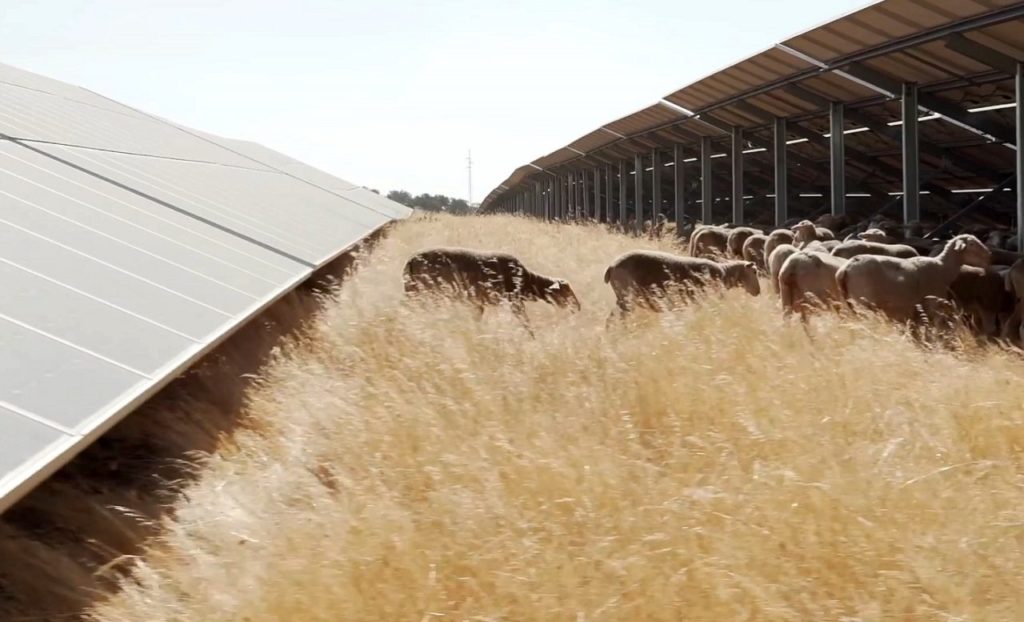
Another important factor that proved a challenge for Iberdrola was the logistics operations required throughout. “One of the challenges included the complexity of the construction due to its dimensions as well as supply challenges with the construction process requiring more than 4,000 containers to be unloaded for main supplies. This with along with the need for 26,500 tonnes of steel for the solar trackers,” the Iberdrola spokesperson says.
With these issues, it poses an important question regarding decarbonisation – how green are these supply chains? Creating greener solutions for supply chains could allow for future projects of this size to be created with a lower carbon footprint.
Perhaps one of the more unusual challenges with the solar project comes in the form of archaeology. In line with plans to preserve both the natural and cultural heritage of the solar plant location, during the constriction process, several startling discoveries were uncovered.
“The biggest challenge has been to reconcile the archaeological finds made during the construction phase. This has required the redesign of the engineering of the affected areas, in parallel with the execution of the works. The archaeological finds continued throughout the civil phase of the project, so that they have coexisted for most of the duration of the project,” says the Iberdrola spokesperson.
During the execution of the project, Iberdrola guaranteed at all times the preservation of the natural environment and the archaeological remains discovered thanks to prospecting work. Specifically, some 20 rock formations with rock art and three archaeological sites were located.
Following the discovery, Iberdrola said that all the necessary measures were taken for the control, excavation and safeguarding of these remains by the company.
Revenue certainty via PPAs
Iberdrola has guaranteed the viability of the Francisco Pizarro project by signing long-term power purchase agreements (PPAs) with companies in different sectors.
One was pharmaceutical company Bayer, with Iberdrola supplying 100% renewable electricity to cover the entire electricity procurement of nine Bayer sites in Spain, including three factories, five research and development centres and the company’s headquarters for Iberia.
At the time, Laura Dieguez, director of communications, corporate public affairs and sustainability at Bayer, said: “Measures such as these help us to further Bayer’s commitment to sustainability by taking concrete steps to reduce our environmental impact. Working with experts such as Iberdrola makes this commitment effective almost immediately, while we contribute to develop the infrastructure Europe needs to build a greener and more environmentally friendly future.”
Alongside Bayer, Iberdrola signed PPAs to supply renewable electricity from the plant to Danone and PepsiCo to cover the energy needs of their centres in Spain.
“Long-term contracts PPAs provide visibility and certainty about the revenues that the plant will receive. This concept is key to the investment decision. Each PPA contract is adapted to the conditions agreed between customer and supplier and is reflected in an agreement for a quantity of energy at an agreed price and term,” says the Iberdrola spokesperson.
“These PPA contracts, together with our portfolio of retail customers and wholesale market sales, structure a balanced mix of secured routes to market with a long-term vision that speeds up the execution of projects.”
The agreement reached with Danone will guarantee the long-term green supply of electricity to all the food company’s Spanish production plants and its natural water sources as well as its logistics centres and offices. Danone España’s suppliers, Graham Packaging and Salvesen Logística, have also joined the alliance, showcasing how the solar project is able to drive decarbonisation and renewable energy into the heart of Spanish supply chains.
An advocate for the natural environment
As revealed previously, the Francisco Pizarro project has incorporated a range of different measures to boost the natural environment and its ecosystem alongside the cultural heritage of the region.
“Independently of the environmental monitoring plan that is carried out during the construction phase, the following environmental measures can be highlighted,” the Iberdrola spokesperson says.
“This includes the introduction of sheep husbandry, the installation of nesting boxes for different species of birds and bats, the construction of shelters for reptiles, radio monitoring of steppe birds and the creation of ponds for storks.
“Along with this, we incorporated agricultural management of land to favour steppe birds, forestry compensation and reforestation, improvements to certain habitats of community interest, construction of rabbit pits and rabbit breeding centres and participated in the Spanish Ornithological Society’s campaign to monitor steppe birds in Extremadura.”
Solar farms can cause multiple issues for birds. Not only can certain areas disrupt both breeding grounds and places to search for food, but it is noted that solar panels can often look like water, ponds and lakes, and thus could have drastic impacts on local bird populations.
Perhaps more pressing is the impact the installation could have on local ground wildlife such as sheep and rabbits. Particularly for rabbits, their breeding grounds can be disrupted via the project and thus Iberdrola has taken specific measures to ensure there will be minimal impact on the local population.
In addition, the introduction of sheep husbandry can help promote further industrial needs. The basis of this allows the sheep to graze and occupy the land in which the plant sits, helping to cater for both farming and renewable energy generation.
With this project currently the biggest solar PV project to be operational in Europe, it is a triumph of its time. However, with the rapid scaling of solar farms around the continent, this project could soon be overtaken. This is a promising move and development as this will continue to spur greater growth in the solar market and help develop a sustainable and renewable society across Europe.


